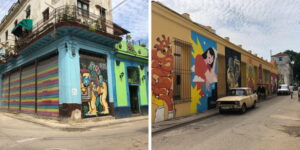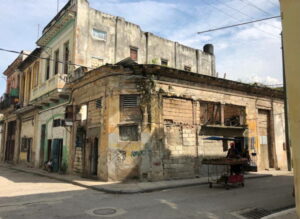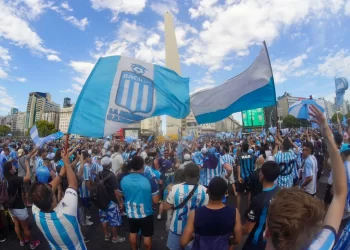HAVANA, Cuba. – The British magazine Time Out has included the San Isidro neighborhood in Old Havana among the 25 “coolest” neighborhoods around the world. To reach such a conclusion, the magazine gathered the opinions of thousands of individuals across the world, “as well as the opinions of editors and local journalists who write about the best places found at each destination.” The factors that determine that a specific neighborhood will be featured in that listing include the leisure and entertainment offers, innovative spaces and a city’s effort to make of these spots an attractive gathering place for locals and tourists alike.
Once again, we residents of Havana are left speechless with having extraordinary places within our geography; places that we visit frequently – even on a daily basis- and yet we have not noticed their swing or the innovation that makes them so unique and attractive. It is our fault, of course, for thinking about the other 24 neighborhoods on the list that we so much wish to visit even though we have never heard about them before.
Last July, two fellow Cubans astonished us with their statements about Marianao, so rich and plentiful –according to them- that some of us were left very confused, even worried about the mental health of the interviewees.
It soon became evident that the interview was trolling the state press. But the Time Out listing is for real, so much so that the shock of seeing the San Isidro neighborhood on par with twenty-plus communities located in prosperous and cosmopolitan cities made us go walking around San Isidro for the umpteenth time, but paying more attention.
If something must be said about the San Isidro neighborhood today it’s how clean it is when compared to other marginal neighborhoods in Havana, and the number of murals whose colors try to hide the many dilapidated buildings, propped-up balconies, the shortages and poverty everywhere. What Time Out magazine is praising today is exactly the part of the neighborhood that was left out of the Master Plan of the Office of the City Historian when, in 1997, the San Isidro People’s Council was split into two smaller neighborhoods: Belén and the new San Isidro, still affected by recent events linked to the San Isidro Movement, repression and political control.

Colors aside, the San Isidro neighborhood looks gloomy and quiet, like any other corner in a country that is dying. Young people spend hours just sitting on their doorsteps, allowing themselves to be defeated by boredom, lost inside the screens of their mobile phones. The “Casa de Titón y Mirta”, a cinema cultural center, is featuring a series of Cuban films that most people have seen a thousand times. Many private businesses have disappeared due to the absence of tourists, inflation, and the constant assault on real and lasting progress.
A barter and reselling economy earns an individual just enough to eat, but not for even the cheapest drink in the few bars that remain open, and empty. According to two individuals who agreed to talk to Cubanet anonymously, at night things are more or less the same.
“There’s nothing here for anyone. Many people have left the country, others are in prison, others are out there trying to make ends meet, it’s the same everywhere,” a resigned lady stated. She agrees with “bringing back to life” the neighborhood, but she knows the reasons why the government has suddenly taken an interest in the neighborhood.

The reason lies in that the San Isidro neighborhood became known inside and outside of Cuba thanks to the peaceful protests of artists like Luis Manuel Otero Alcántara and Maykel Osorbo, two young Cuban men who remain in prison under charges trumped-up by State Security police. This is the truth that Time Out magazine will never feature next to the “dark salsa-dancing places”, or the famous bar that glorifies the name of an early 20th century pimp, or the speakers blasting the music that’s in vogue on every street corner.
That’s how the San Isidro neighborhood has been described by those that consider it among the coolest neighborhoods in the world, in spite of the fact that the “joy to live” flees terrified from San Isidro due to the never-ending crisis; in spite of bars having no cold beer due to the blackouts; and in spite of the fact that the definition of “art mecca” doesn’t make the grade, as happens every time they try to hide reality with exaggerated statements. Markets and produce shops have been decorated to distract the visitor and to avoid that he or she wants to know what items are sold to the people in those raddled and defaced shops, as dark and empty as the revolution that never was.

Actor Jorge Perugorría could not be left out of this narrative as promotor of the bohemian and “chic” environment that, allegedly, distinguishes this traditionally poor neighborhood. However, beyond his interest in turning a formerly “tolerance zone” into an outdoor art gallery, the beloved Diego from the film “Fresa y Chocolate” (Strawberry and Chocolate), has been a key component of the Cuban regime’s plam to erase from the collective memory everything about the San Isidro Movement and the hunger strike that some of its members went on to demand freedom of expression and artistic freedom.
“I feel very sorry for that young man. He is in prison, and out here everything remains the same. Nobody cares. Those who can, leave, and those who can’t leave just keep their routine and don’t get involved (…). For nothing, that boy is in jail for nothing,” says a much older man about Luis Manuel Otero Alcántara, while emphasizing that the artists sacrificed himself in vain, because “our people live in fear and without shame (…) we have lost all shame,” he concludes and starts walking away down Paula Street, where José Martí, one of our founding fathers, was born, toward Port’s Avenue by the harbor in Havana.
ARTÍCULO DE OPINIÓN
Las opiniones expresadas en este artículo son de exclusiva responsabilidad de quien las emite y no necesariamente representan la opinión de CubaNet.
Recibe la información de CubaNet en tu celular a través de WhatsApp. Envíanos un mensaje con la palabra “CUBA” al teléfono +1 (786) 316-2072, también puedes suscribirte a nuestro boletín electrónico dando click aquí.
Fuente Cubanet.org




 Argentina
Argentina USA
USA Paraguay
Paraguay España
España Israel
Israel

















